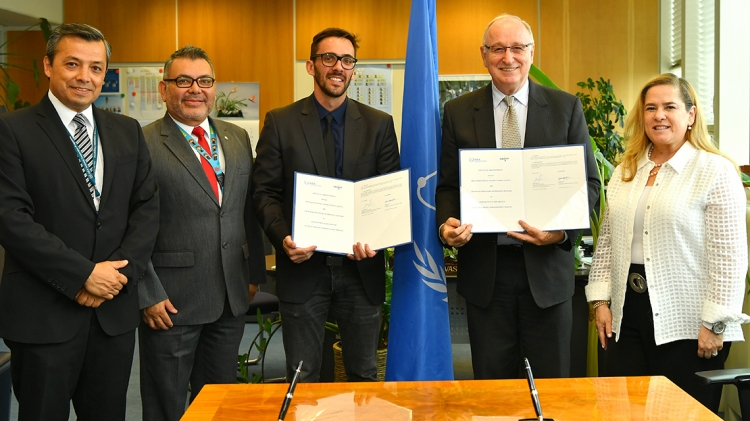The IAEA signed a practical arrangement today with the Brazil-based Sociedade Brasileira de Medicina Nuclear (SBMN) which will increase training opportunities for nuclear medicine professionals in Latin America and the Caribbean (LAC), as well as in Portuguese-speaking African countries.
While in the past both organizations have worked together in the areas of nuclear medicine and molecular imaging, the practical arrangement – the first of its kind to be signed by the IAEA in Latin America – will now define and formalize this collaborative relationship.
“Brazil provides an ideal backdrop to the partnership arrangement as the country is home to the largest number of nuclear medicine centres in the Latin American and Caribbean region, hosting several state-of-the-art facilities relating to all areas of nuclear medicine,” said Diana Paez, Head of the Nuclear Medicine and Diagnostic Imaging Section of the IAEA’s Division of Human Health. “It also offers an excellent variety of training programmes and a robust community of high-level experts.”
According to the World Health Organization, cancer and cardiovascular diseases, both of which are classified as non-communicable diseases (NCDs), are among the leading causes of death in the world. Of 56.4 million global deaths in 2015, 17.7 million were attributed to cardiovascular diseases, while 8.8 million were due to cancer. Furthermore, the number of patients affected is on the rise due in part to increasing lifespans as well as changes in lifestyle. Nuclear medicine plays an important role in the care of such NCDs, from their early detection, through the treatment phase and later, in monitoring patient responses to treatment.
The scope of the practical arrangement will cover collaboration between the two partners in the further training of nuclear medicine and molecular imaging professionals, and those from related disciplines, in IAEA Member States. In particular, it will target professionals from the LAC region, as well as Portuguese-speaking African countries. As part of their cooperation, the IAEA and the SBNM will identify high-level clinical centres or universities for the training of nuclear medicine professionals and fellows. They will also provide expertise and other training-related support aimed at further building capacity in this field. Finally, they will help with the identification of high-level clinical centres suitable for participation in IAEA Coordinated Research Projects.
“The agreement will build an official bridge to the path of collaboration,” said Juliano Cerci, President of the SBMN. “We hope to strengthen the fields of research and learning, but also practical issues like regulation and formal education.”
For more than 50 years, the SBMN has been a leading organization in the field of molecular imaging and nuclear medicine in Brazil, working to promote and expand the knowledge, use and access to nuclear medicine in the country. Its mission is to promote, support and stimulate the progress, improvement and dissemination of nuclear medicine as well as related sciences and disciplines in the scientific, ethical and economic fields.
“The IAEA is pleased to formalize our collaborative relationship with the SBMN,” said Aldo Malavasi, Deputy Director General and Head of the IAEA Department of Nuclear Sciences and Applications. “This practical arrangement is the first of its kind in Latin America and the Caribbean and will bring together the IAEA’s institutional reach and the SBMN’s expertise in nuclear medicine, enabling enhanced training opportunities and capacity building throughout the region. Cooperation between the IAEA and professional organizations is essential to expand the support for both the Agency’s work, outreach and impact.”







